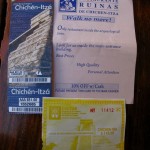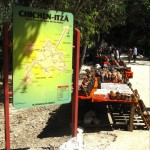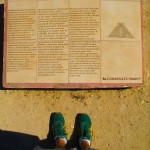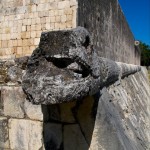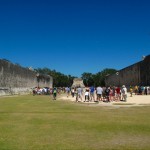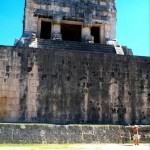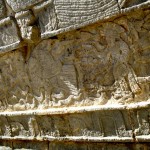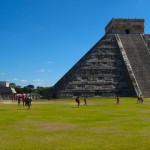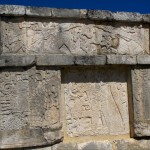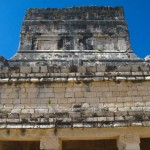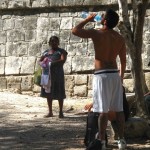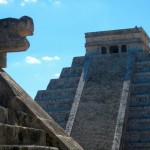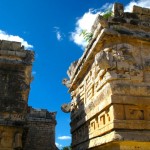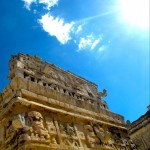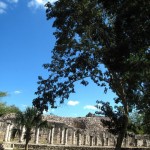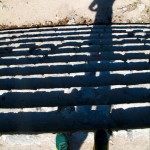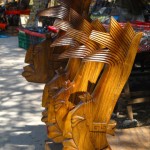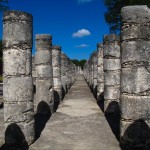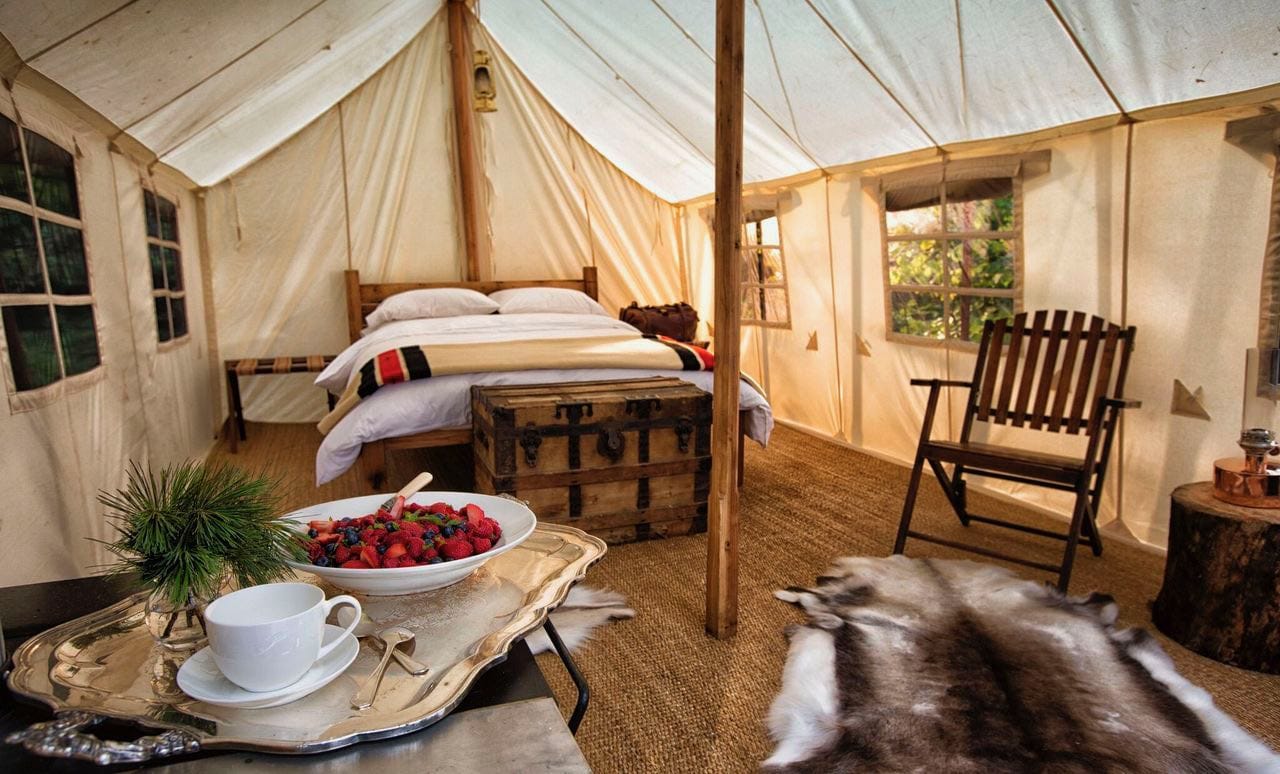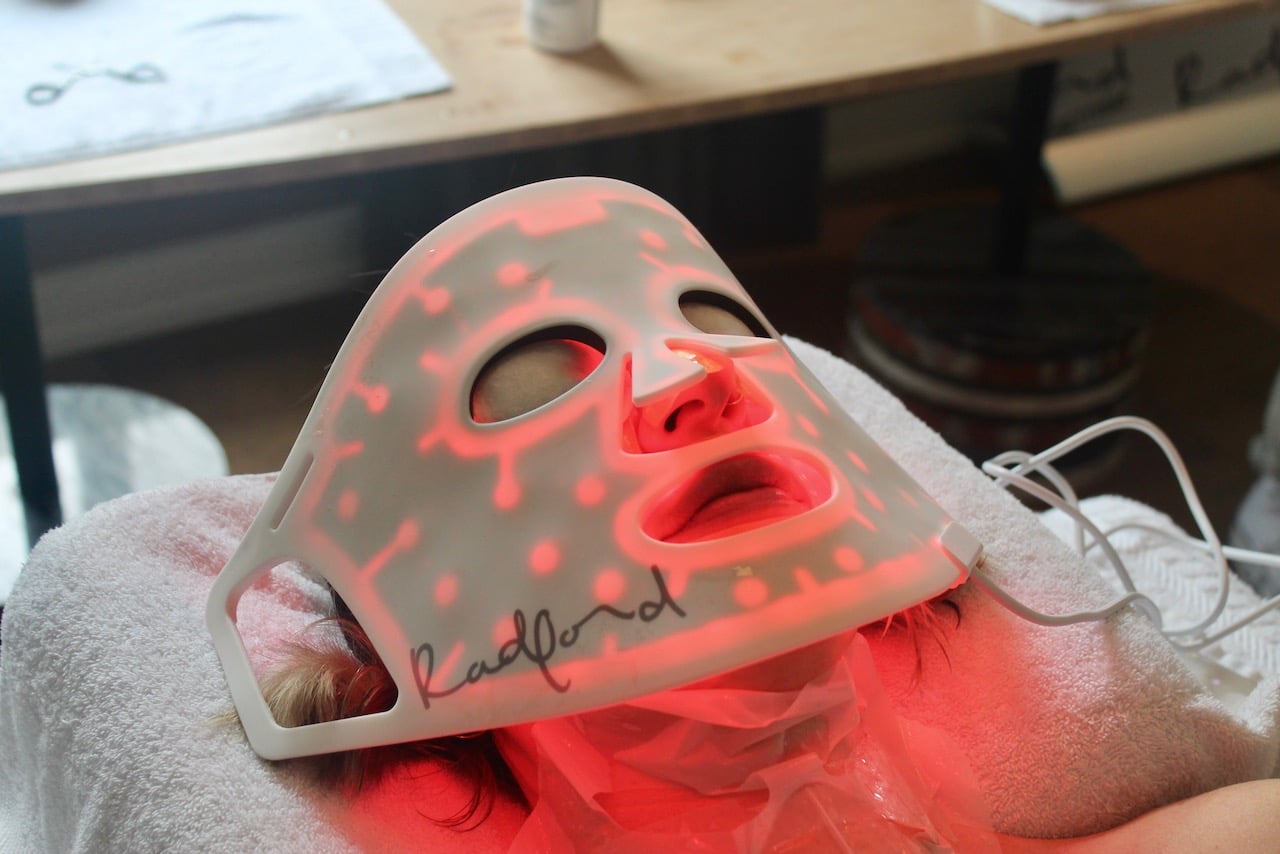I woke up at my hostel in Playa del Carmen at 7am, grabbed my bags and ran down to the ADO terminal to catch my 8am bus to the famous Mayan ruins of Chichen Itza. The drive took a total of around 3 1/2 hours as we drove south to Tullum and Coba to pick up more passengers before heading inland through Valladolid. The bus ride gave me a great opportunity to stare out into the Mexican rural country side. Dusty streets home to many mangled mutts and garbage filled gutters. Simple houses with walls made of sticks and roof made of sheet metal were commonplace.
Once arriving at the ruins I grabbed my ticket and entered the main plaza where I was able to leave my backpack (for free) for the duration of time I spent walking about the site.
The ruins are a large pre-Columbian archaeological site built by the Maya civilization located in the northern center of the Yucatan Peninsula (located on the highway which links the cities of Playa and Merida). The ruins location between these two great tourist friendly cities makes a day trip to the ruins ideal as you can leave once city, visit the ruins and grab a bus to the next. The site exhibits a multitude of architectural styles, from what is called “Mexicanized” and reminiscent of styles seen in central Mexico to the Puuc style found among the Puuc Maya of the northern lowlands. The presence of central Mexican styles was once thought to have been representative of direct migration or even conquest from central Mexico, but most contemporary interpretations view the presence of these non-Maya styles more as the result of cultural diffusion.
Northern Yucatán is arid, and the rivers in the interior all run underground. There are two large, natural sink holes, called cenotes, that could have provided plentiful water year round at Chichen, making it attractive for settlement. Of the two cenotes, the “Cenote Sagrado” or Sacred Cenote (also variously known as the Sacred Well or Well of Sacrifice), is the most famous. According to post-Conquest sources (Maya and Spanish), pre-Columbian Maya sacrificed objects and human beings into the cenote as a form of worship to the Maya rain god Chaac.
Dominating the center of Chichén is the Temple of Kukulkan, often referred to as “El Castillo” (the castle). This step pyramid has a ground plan of square terraces with stairways up each of the four sides to the temple on top. On the Spring and Autumn equinox, at the rising and setting of the sun, the corner of the structure casts a shadow in the shape of a plumed serpent – Kukulcan – along the west side of the north staircase. On these two annual occasions, the shadows from the corner tiers slither down the northern side of the pyramid with the sun’s movement to the serpent’s head at the base.
Mesoamerican cultures periodically built larger pyramids atop older ones, and this is one such example. In the mid 1930s, the Mexican government sponsored an excavation of El Castillo. After several false starts, they discovered a staircase under the north side of the pyramid. By digging from the top, they found another temple buried below the current one. Inside the temple chamber was a Chac Mool statue and a throne in the shape of Jaguar, painted red and with spots made of inlaid jade.
Archaeologists have identified several courts for playing the Mesoamerican ballgame in Chichén, but the Great Ball Court about 150 metres to the north-west of the Castillo is by far the most impressive. It is the largest ball court in ancient Mesoamerica. It measures 166 by 68 metres. The imposing walls are 12 metres high, and in the center, high up on each of the long walls, are rings carved with intertwining serpents. At the base of the high interior walls are slanted benches with sculpted panels of teams of ball players. In one panel, one of the players has been decapitated and from the wound emits seven streams of blood; six become wriggling serpents and the center becomes a winding plant
The site had an alarming number of local Mexican’s selling tourist trinkets and wood carvings. Of all the Wonders of the World I have visited I have never seen such in your face commerce (it was annoying). Machu Picchu and Angkor Watt were much more relaxing.
For the three hours I walked around the ruins that day I almost melted from the heat. Tourists traveling in groups often had guides hoisting large umbrellas under the weak who seemed as though they may drop dead. I highly suggest the Mexican government erect a water park ten minutes down the road. They would get a serious amount of business after tourists had spent a day heating up. In my last 30 minutes I actually ran from one little patch of tree shade to the next in an attempt to get back to the entrance of the park for my bus to Merida.
Ladies and gentleman pack your Venetian fans, Fiji Water, Japanese umbrellas and sun tan lotion as you are going to need all of the above to enjoy your stroll through the truly jaw dropping ruins of Chichen Itza.
